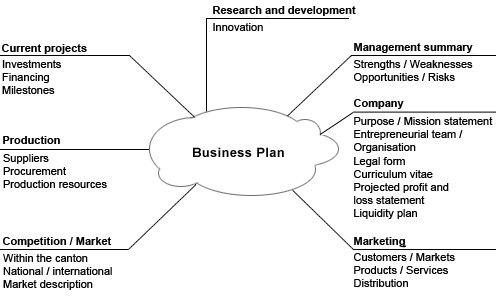1. Executive Summary [of your business plan]
An executive summary is a concise overview of your business plan written for investors, partners, or other decision makers. It can include a brief overview for the purpose of your business (the problem you are solving), plans, goals, strategies, product/services, USP, finances, competitive advantage, and an introduction of your team (if any).
What to include:
- Company name and mission statement
- Brief overview of products/services offered
- Target market and customer demographics
- Competitive advantage and unique selling proposition
- Financial projections and funding requirements
- Brief introduction of management team
Draft:
[Business Name] is a [description of business] that aims to [mission statement]. Through our research we have identified a demand for [product or service] in [target market]. Our [unique selling point] sets us apart from other players in the industry.
We are committed to deliver exceptional customer service and build long-term relationships with our clients. We finance our work through [sources of revenue]. To have a comprehensive sales strategy we aim to focus on online and offline markets.
We have a dedicated team of [number of members] with the ability to execute our business plan and achieve success in the [industry] market.

2. Company Description
A detailed description of the company to give readers an understanding of the company’s history, mission and vision, values, product/services, location, facilities, legal structure and key managerial personnel, financial information, target market and sales strategy. It could be as detailed or comprehensive as possible. This gives the reader/audience a better understanding of the rest of the document.
What to include:
- Company history and background
- Legal structure and ownership
- Location and facilities
- Products/services offered and value proposition
- Key milestones achieved and future goals
Draft:
[Company name] was incorporated [date/year] and began its operation in [year/time] with its head office located at [place]. We have an office with an open working space, providing the perfect environment for our employees to be creative. Our key managerial personnel include [name/number].
We began our operations with an initial [amount] of capital, with a further investment of [amount]. We aim to use the [fund] in expanding our business line in [sectors]. Till date we have researched, executed, and achieved [results].
We strongly believe in sustainably and ethically executing our business practices with a focus on our customers, employees, environment, and the society. We care about the impact our business leaves on society.
3. Market Analysis of your business
It is a key component of a business proposal which helps understand the market and identify opportunities and threats that can impact the success of the business. The process involves gathering information about the market in which the business operates and analyzing it with regards to industry, customers, competition, and trends. This helps understand market trends like changes in customer preferences, technological advancement, and regulatory affairs, factors based on demographics, geography, and analyzing consumer behavior and needs. This section demands data and analysis.
What to include:
It’s basically a SWOT analysis: strengths, weaknesses, opportunities, and threats facing the business in the market.
- Industry overview and trends
- Target market and customer segmentation
- Competitor analysis and SWOT analysis
- Market size and growth potential
- Regulatory and legal considerations
Draft:
Through our research we found significant growth in the [industry] over the last [few] years. The industry drives its growth from factors like [factors] which have a growing demand of [product/service] in the [targeted market]. Although the [target market] already is dominated by major players [name] but the market is always welcoming new players with new and innovative solutions.
We are/have entered the market with our [USP] which makes us a step ahead in the industry to cater the ever-growing needs of the [target market]. We aim to achieve our targets by continuously updating ourselves with the change in consumer behavior and the ever changing technical-know-how of the [industry/market].
4. Detailed description of Products/Services
This is one of the most important segments. It helps understand the core of any business i.e. its product/services. It is important to describe the product/services in detail, what features and benefits it has, how it differentiates a business from its competitors by highlighting unique features or benefits, proprietary technology and intellectual property, research, and development, as well as manufacturing and production processes. Ultimately your product/service is your brand.
What to include:
- Detailed description of products/services offered
- Features and benefits of products/services
- Intellectual property and proprietary technology
- Research and development activities
- Manufacturing and production processes
Draft:
Our [product/services] meets the demand or solves the [problem] posed by the [industry] in the targeted [market]. The [product/service] is designed in a way to suit the [market] and meet the demand of each customer in a customized way.
We have designed our [product/service] with a [USP] backed by latest technological advancements to be at par with the growing industry demands and competitors. Our expert team is result oriented and is continuously working towards solving any consumer issues and demands.
5. Marketing and Sales Strategy
Once the business description and product/services is defined, now comes the stage of how the business markets and sells its product/service. Marketing is finding and engaging prospective customers to promote and build interest in the brand. Selling the product is the next stage of the strategy to the targeted customers into potential buyers. It helps increase customer satisfaction, loyalty, and sales, while also improving the business’s marketing and product development efforts.
What to include:
- Target market and customer acquisition strategies
- Pricing strategy and revenue model
- Distribution channels and sales process
- Marketing and advertising campaigns
- Branding and positioning
Draft:
At [company] our aim is to reach the right market and the customer. We understand the importance for the [product/service] to be available at the right market. We have a dedicated team of marketing personnel who build brand awareness, generate leads, and convert those into customers.
[Describe your marketing strategy, might consist of social media, advertising, monthly targets, content development, offline marketing details/targets etc.]
Once the product is well marketed our whole focus shifts on customer acquisition and selling the product/service. We further wish to introduce sales/marketing software/tools to have a better track of our operations.
6. Operations
Describing business operations as to how a business functions, process it uses to create/develop the product/service, the distribution strategy involving procurement, transportation, and inventory management, payment collection, quality control, complaint registration and more. Further describing the organizational structure for carrying out the operations of the company including management, employees, and any third-party contractors or partners. It’s a description which helps potential investors, partners, and employees understand how the business works and what it takes to succeed.
What to include:
- Organizational structure and management team
- Human resources and talent acquisition
- Production à Manufacturing and supply chain processes
- Inventory management
- Quality control and customer support
- Logistics and distribution
- Health and safety plan
Draft:
We understand the importance of a well-planned and executed operations strategy to ensure the success of our business. This operations plan outlines how [Your MSME Name] will efficiently manage its day-to-day activities to achieve its goals and deliver value to customers. This plan covers key operational aspects such as production, inventory, logistics, quality control, and resource management.
- List the raw materials, equipment, and tools needed for production.
- List clear roles and responsibilities of team leads
- Detail the production schedule, including shift timings and production targets
- Identify any potential bottlenecks and outline strategies to mitigate them
- List other key details under different operational aspects
7. Financial Projections
It is a stage where the business makes assumptions and estimates of future financial performance of a business At the stage of financial projections it is important for businesses to have a clear understanding of the cost involved from starting a business to successfully running it – from revenue and expenses forecast, from break-even analysis to a profitability forecast, cash flows and financing needs, investor returns, and exit strategy.
What to include:
- Revenue and expense forecasts
- Break-even analysis and profitability projections
- Cash flow projections and financing needs
- Assumptions and risks
- Exit strategy and investor return.
You can download this template visiting our “Resources –> Template” page.
















